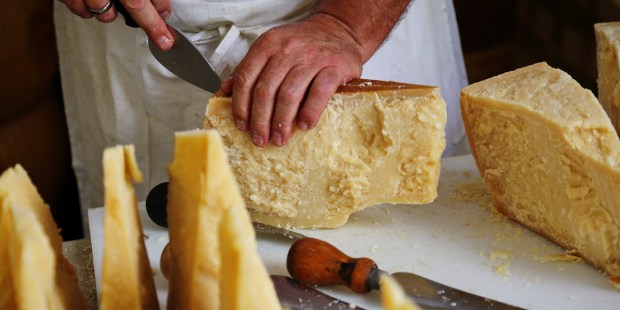- Feb 5, 2002
- 169,350
- 58,003
- Country
- United States
- Faith
- Catholic
- Marital Status
- Married
- Politics
- US-Others
The beloved cheese was created as a way to turn milk into a long-lasting dairy product that is now protected under European Union law.
In the past few decades, Parmesan cheese has become a beloved staple of Italian cuisine around the world. Shredded Parmesan goes well on top of almost any pasta dish, works well as a pizza topping, and can be used to make delicious cheese-crusted roasted veggies.Parmesan as we know it today probably made its entrance into Italian kitchens in the 13th century. As explained by cheesemaker association “The Four Madonnas,” Parmesan cheese was first created in Benedictine monasteries around the northern Italian towns of Modena, Reggio Emilia, Parma and Bologna, thanks to a technique learned from monks from the famous French monastery in Cluny, Saône-et-Loire, France.
Well before the age of fridge and freezers, monks on both sides of the Alps were faced with the challenge of preserving milk from local cows beyond immediate consumption. Italian Benedictine monks were used to turning milk from sheep or goats into cheese; however, they had yet to find a similar technique to transform cow cheese into a long-lasting cheese.
Thanks to cheesemaking techniques learned from Cluny’s “cousins,” they were able to come up with a solution for cow’s milk, too. By adding salt from Salsomaggiore salt mines to milk, the monks created a dry, calcium-rich cheese in large wheels that — thanks to the preservative effects of salt — could last for months.
Continued below.

How Catholic monks invented Parmesan cheese
The beloved cheese was created as a way to turn milk into a long-lasting dairy product that is now protected under European Union law.
